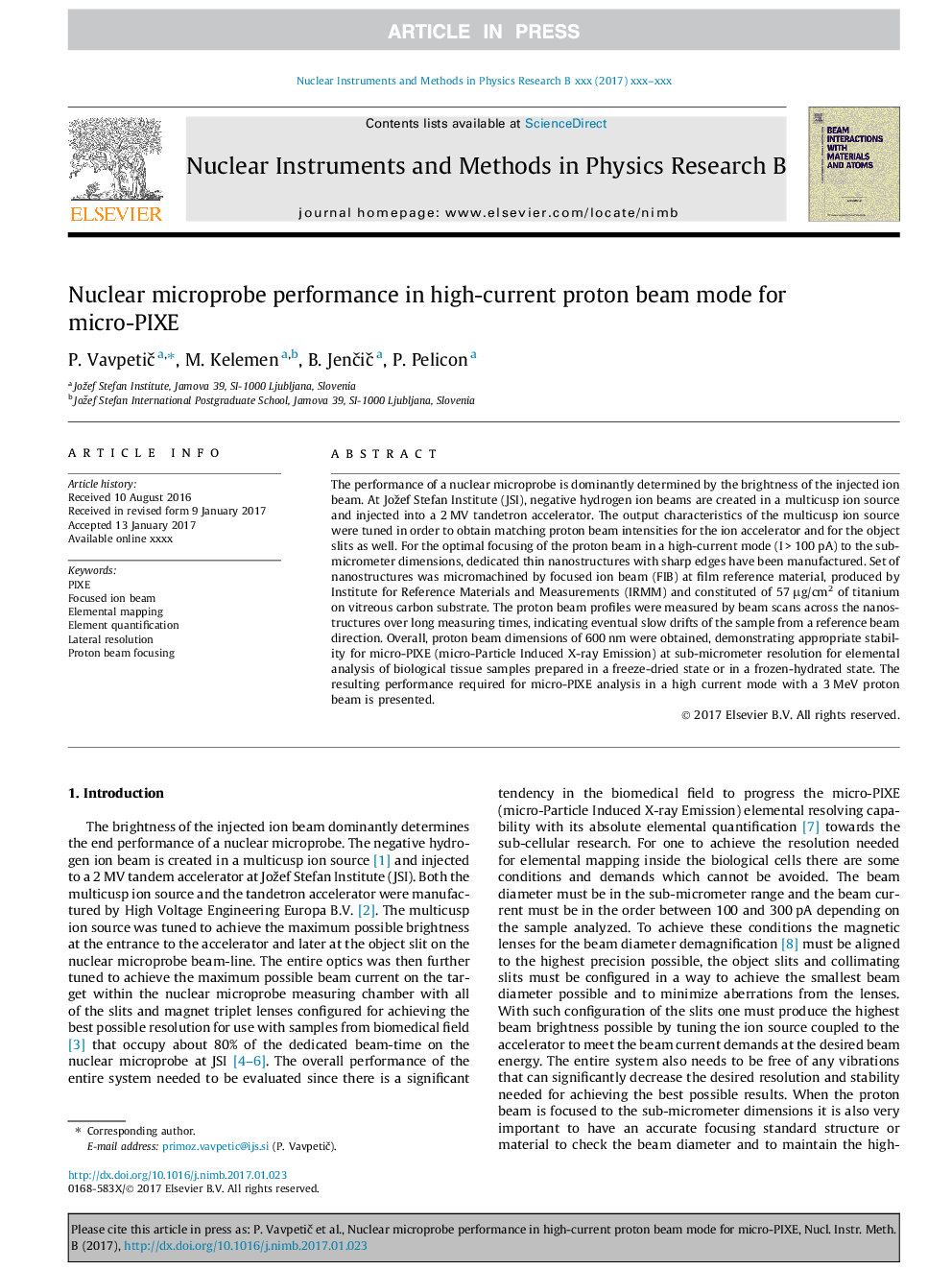| Article ID | Journal | Published Year | Pages | File Type |
|---|---|---|---|---|
| 5467167 | Nuclear Instruments and Methods in Physics Research Section B: Beam Interactions with Materials and Atoms | 2017 | 5 Pages |
Abstract
The performance of a nuclear microprobe is dominantly determined by the brightness of the injected ion beam. At Jožef Stefan Institute (JSI), negative hydrogen ion beams are created in a multicusp ion source and injected into a 2 MV tandetron accelerator. The output characteristics of the multicusp ion source were tuned in order to obtain matching proton beam intensities for the ion accelerator and for the object slits as well. For the optimal focusing of the proton beam in a high-current mode (I > 100 pA) to the sub-micrometer dimensions, dedicated thin nanostructures with sharp edges have been manufactured. Set of nanostructures was micromachined by focused ion beam (FIB) at film reference material, produced by Institute for Reference Materials and Measurements (IRMM) and constituted of 57 μg/cm2 of titanium on vitreous carbon substrate. The proton beam profiles were measured by beam scans across the nanostructures over long measuring times, indicating eventual slow drifts of the sample from a reference beam direction. Overall, proton beam dimensions of 600 nm were obtained, demonstrating appropriate stability for micro-PIXE (micro-Particle Induced X-ray Emission) at sub-micrometer resolution for elemental analysis of biological tissue samples prepared in a freeze-dried state or in a frozen-hydrated state. The resulting performance required for micro-PIXE analysis in a high current mode with a 3 MeV proton beam is presented.
Related Topics
Physical Sciences and Engineering
Materials Science
Surfaces, Coatings and Films
Authors
P. VavpetiÄ, M. Kelemen, B. JenÄiÄ, P. Pelicon,
